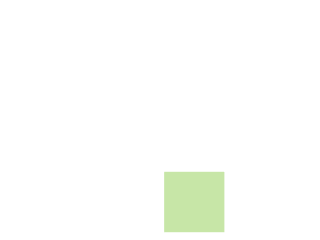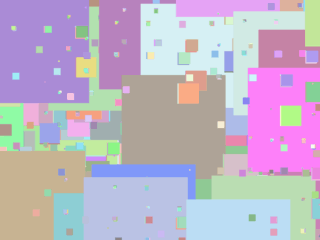For my animation, I was interested in crafting some kind of scene with “progress” — objects becoming one another, but in a way that’s cyclic. I came up with the idea of a cube that bounces on top of a larger cube, growing larger on each bounce, until it is big enough to swallow and then replace the cube, only to have a smaller cube fall to take its place. If I was better at animation, I’d propose subjects with better narrative potential, like fish or soldiers. But I’m not very good, so I went with cubes.

Look, I think we’re getting at this point that I’m not a visual artist.
My animation was written in OpenFrameworks using the ofxGifEncoder addon. The motion of a smaller cube dropping and bouncing on a large cube, growing until it ultimately encompasses and replaces the larger one, repeats over about four times — each time, the new small cube has a random color, that cycles back to the original on the final iteration, so the cycle begins again.
There were a couple of minor animation challenges. Getting the fall and the bounce to be smooth and realistic required some math and tweaking. The logic for ensuring a small cube, after a given number of bounces, would grow to be equal in size to the larger cube, was also tricky for arbitrary sizes. These challenges were, more than anything else, a matter of determining how to make the shape’s movement appear natural. Nothing horrific or even nontrivial, but again, I’m not very good.
My initial results were lackluster: a single cube bouncing off of another cube just wasn’t very interesting or challenging. My solution was to add more cubes, have cubes being bounced on drop cubes of their own onto larger cubes to their sides, like some kind of assembly line. Something procedural, I thought, would be interesting.
I still had problems with this one. Having more cubes made me notice the spaces, and the notion of an assembly line didn’t really come through. I decided, then, that the solution was complexity and chaos: adding a TON of cubes that fed into each other throughout the image, such that the entire image was covered with them. I created 1000 randomly oriented and sized copies of the animation across the screen.
My final result, I thought, was interesting. It lacks any mind for composition or aesthetic, really, but it has elements I like: chaos, randomness, and causality. It even repeats. Mission accomplished…?


